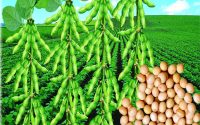How to processing and refining edible oils
Processing can remove the components of edible oils which may have negative effects on taste, stability, appearance or nutritional value. To the extent possible, processing should preserve tocopherols and prevent chemical changes in the triacyglycerols.
Rural vegetable oil production
Rural oil extraction usually occurs near the areas of raw material production. This provides the smallscale processor with access to raw materials, helps to ensure that perishable oil crops are processed quickly, and reduces transport costs. For rural communities and the urban poor, unrefined vegetable oils contribute significantly to the total amount of oil consumed. Crude oils are affordable to low-income groups and serve as important sources of b -carotene and tocopherols.
To maintain the quality of the raw material, care is needed during and after the harvesting of oil bearing fruits that are perishable and susceptible to fat breakdown. Bruising of fresh palm fruits accelerates lipase activity leading to fat degradation. Oil-bearing crops such as sheanuts are prone to mould infestation during storage. This is curtailed by heat treatment: steaming or boiling, coupled with sun-drying to reduce the moisture content.
Storage. The moisture content of oil seeds and nuts influences the quality of raw materials over time. In most rural operations, sun-drying reduces the moisture content of oil seeds to below 10 percent. Adequate ventilation or aeration of the seeds or nuts during storage ensures that low moisture levels are maintained and microbial development is avoided. This is important in the storage of groundnuts which are highly susceptible to aflatoxin contamination through the growth of Aspergillusflavus. Since aflatoxins and pesticides are not removed by rural extraction techniques, microbial contamination and the application of insecticides should be avoided. There is a need for storage practices which are affordable and available to the small-scale processor. Perishable raw materials such as palm fruits should be processed as soon as possible after harvesting.
In humid developing countries, the sun-drying of oil seeds with a high moisture content, such as mature coconut, is slow and inefficient. Such conditions promote mould growth which results in high free fatty acid levels and poor organoleptic qualities. Coconut oil for human consumption should be obtained soon after harvest.
Pre-treatment. The first operation after harvesting involves sterilization and heat treatment by steaming or boiling, this inactivates lipolytic enzymes which could cause rapid degradation of the oil and facilitates the pulping of the mesocarp for oil extraction. “Sterilised” palm fruits are pulped in a wooden pestle and mortar or mechanised digestor.
Decortication or shelling separates the oil-bearing portion of the raw material and eliminates the parts that have little or no nutritional value. Small-scale mechanical shellers are available for kernels and nuts although manual cracking is still prevalent.
Most oil seeds and nuts are heat-treated by roasting to liquify the oil in the plant cells and facilitate its release during extraction. All oil seeds and nuts undergo this treatment except palm fruits for which “sterilization” replaces this operation.
To increase the surface area and maximize oil yield, the oil-bearing part of groundnuts, sunflower, sesame, coconut, palm kernel and sheanuts is reduced in size. Mechanical discattrition mills are commonly used in rural operations.
Extraction. In oil extraction, milled seed is mixed with hot water and boiled to allow the oil to float and be skimmed off. The milled oil seed is mixed with hot water to make a paste for kneading by hand or machine until the oil separates as an emulsion. In groundnut oil extraction, salt is usually added to coagulate the protein and enhance oil separation.
A large rotating pestle in a fixed mortar system can be powered by motor, humans or animals to apply friction and pressure to the oil seeds to release oil at the base of the mortar. Other traditional systems used in rural oil extraction include the use of heavy stones, wedges, levers and twisted ropes. For pressing, a plate or piston is manually forced into a perforated cylinder containing the milled or pulped oil mass by means of a worm. The oil is collected below the perforated chamber. A variety of mechanical expellers have been designed. The pre-heated raw material is fed into a horizontal cylinder by a wormshaft. By means of an adjustable choke, internal pressure which is built up in the cylinder ruptures the oil cells to release the oil.
Dehydration. By boiling in shallow pans, traces of water in crude oil are removed after settling. This is common in all rural techniques which recognize the catalytic role of water in the development of rancidity and poor organoleptic qualities.
Pressed cakes. A by-product of processing, the pressed cake, may be useful depending on the oil extraction technique applied. Cakes from water-extracted oil are usually depleted of nutrients. Other traditional techniques, for instance, those used for groundnut and copra ensure that the by-products, if handled with care, are suitable for human consumption.
Traditional technologies. In many countries, traditional processes for producing oil are very important, especially among communities which have easy access to raw oleaginous materials. Traditional processing tends to be environmentally sound and the skills required are family or group activities, involving women in particular. In a changing industrial atmosphere, these positive features have been outweighed by the negative aspects of traditional processing such as small production capacities, poor economies of scale, high expenditures of energy and time, and the cost of transporting oils to markets.


